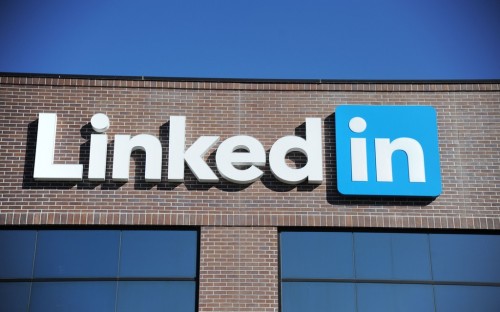Business schools have become global brands and expansion is a key source of growth. As they extend campuses and capture students, the business of alumni relations has become a land grab.
Yet technology has reduced the need for real estate. Social media is now driving international relations. Online courses are opening up new markets. LinkedIn and Facebook are spurring student connectivity – digital networks are essential for employment.
Nearly 90% of Fortune 100 companies use LinkedIn’s career services, according to the company, with talent solutions contributing the largest amount of its $568 million in revenue generated in the third quarter of 2014 – 61%.
“[Business] schools have an opportunity to partner with corporations,” says Sean Brown, director of global alumni relations at McKinsey & Company, the consultancy firm, speaking at a Global Leaders Summit organized by Graduway, an alumni networking company.
This includes both for career opportunities and to promote programs and academic research.
McKinsey is regarded as having one of the best networks in the world. Like many other global companies, its collection of 30,000 former consultants is a rich source of business that universities can tap into.
Sean smiles and shifts forward in his seat. There are opportunities for universities to raise their profiles, he says while pointing at his audience, a few dozen alumni managers, some from the world’s top business schools.
He sees these schools pitch their programs in person to McKinsey at the firm’s New York offices – but alumni relations have evolved to depend on the use of technology to reach global students, applicants, recruiters and potential donors.
“Folks are figuring out ways to collaborate for free, without having to drop a million dollars on a massive development effort,” says Sean, an MBA alumnus of MIT’s Sloan School of Management, who also worked as its director of alumni relations.
This technology is driving international alumni engagement. It has enabled business schools to lure an increasingly mobile pool of global students and diversify cohorts.
“Social media has become my best friend,” says James Stofan, vice president of alumni relations at Tulane University in New Orleans, which runs a number of MBA and master’s programs and was also speaking at the Graduway Global Leaders Summit.
Education has become global and expansion has been rapid, but many business schools lack the human capital or financial resources to establish new campuses overseas.
“We don’t have the resources to go and have campuses in other parts of the world,” says Daniel Porter-Jones, alumni relations and development manager at the University of South Wales, also home to business master’s and MBA programs.
But technology enables educators to jump financial hurdles. Social media is key to unlocking the potential of the many digital networks that are at users’ fingertips.
More than 200 universities across the world signed up for LinkedIn’s University Pages’ launch in 2013.
The feature has enabled more connectivity with business schools – including INSEAD, Cornell’s Johnson School and Georgetown’s McDonough School of Business – and their communities in the cyberworld.
“We facilitate a global engagement,” says Charles Hardy, higher education evangelist at LinkedIn.
As business schools in emerging markets across the Middle East and in Asia have grown in stature, so have the social networks feeding their brands in those regions.
LinkedIn’s growth in the US has slowed, and the fastest penetration rates are now seen in regions such as South America, the Middle East, India and China, according to Charles, who leads the company’s graduate initiative in EMEA. “Our vision is to have the global workforce on LinkedIn,” he says, ambitiously.
Social media technology is also changing the way budgets are spent and how alumni officers operate. The companies that provide innovative tech services are finding business at the world’s top universities.
EdgeTheory is a start-up that mines social media data on platforms including Twitter, Facebook and Pinterest to find topics relevant to clients, and then inputs marketing messages into those social media conversations.
It has signed up businesses as clients including Match.com, the dating website owned by US-listed internet group InterActiveCorp, as well as multiple universities.
This includes Tulane University. James says it is all about staying relevant: “We find the conversation rather than having it come to us.”
Blackbaud, a Nasdaq-listed software services company, works with education institutions to connect departments, schools and functions with fundraising and marketing services, among other offerings.
Daniel Keyworth, head of customer engagement, says technology can lead to success. “As we have a wider engagement from overseas, I think we’re opening up new engagements, prospects [and] opportunities.”
But he warns that the internationalization of education means it’s now more important to deliver a personalized method to each region. “People can choose to go to many more places than before, so it’s important that we deliver a more tailored method,” he says.
This is also true of the business schools that seek greener pastures in physical locations overseas. As managers become more mobile and seek diverse career opportunities, schools have been forced to expand.
This is particularly true in Europe where schools are looking at Asia as the next big growth area.
Spain’s ESADE Business School in October announced plans to launch a dual-degree in 2015 with the Guanghua School of Management, which is based in Beijing, for instance, while London Business School in June said it had paired with Shanghai’s Fudan University to launch a double-degree master in management program.
However, competing on a global scale is a challenge. It can be problematic to reproduce a campus’ unique culture and a ‘one size fits all’ approach is often ineffective.
“People mistrust that,” says Christine Fairchild, director of alumni relations at the University of Oxford in the UK, which houses Saïd Business School.
Establishing an office in key locations that are strategically important is valuable, but sometimes a campus is hard to recreate in another place, she says. “It’s important to honour the culture you’re in.”
For those that get it right, there are rich rewards. Fundraising has always been a key part of alumni relations and technology is making it easier to connect with graduates.
There have been large sums donated to business schools. Imperial College Business School, for instance, received a £20 million gift from hedge fund Brevan Howard, whose founder Alan Howard is an alumnus of Imperial College.
INSEAD recently launched a new Singapore campus with $44 million in funding raised in part by alumni. This included a S$5 million contribution from Andre Hoffmann, an alumnus and vice chairman of global healthcare company F. Hoffmann-La Roche.
Some donations have been larger. This includes the $300 million gift given to Chicago Booth in 2008 by David Booth, who received an MBA from Chicago in 1971 (hence the name).
For alumni officers, collaboration has become key. Alumni relations departments were once solo operations but they are increasingly working with admissions officers and careers centres.
“You can sometimes see a little bit more siloing [in universities],” says Sean at McKinsey.
But he adds: “I would partner even more within the other areas – with student affairs, with admissions, with the career office – to leverage stuff that’s already happening.”
With a nod to the future, alumni managers say that Moocs – massive open online courses – are potentially another area of growth.
They could give business schools access to thousands of degree applicants and donors. “There is a significant opportunity there,” says Daniel at Blackbaud, from a fundraising perspective.
But there remain problems. Completion rates are low and it is unclear whether recruiters value Moocs. There are also potential problems in grouping Mooc takers with degree students in alumni clusters. “Everything is getting more complicated,” adds Daniel.
To hear from more speakers at the Graduway Global Leaders Summit, click here
RECAPTHA :
10
d0
b9
d7








